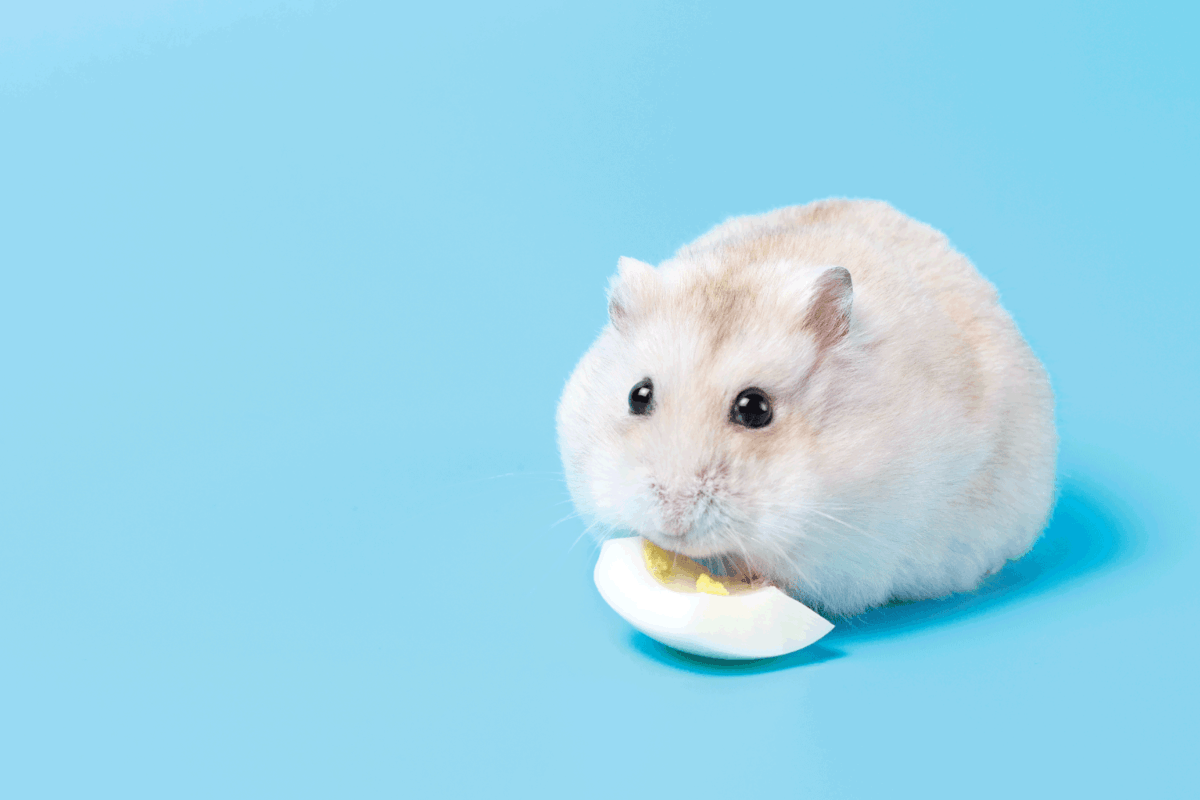If you own a hamster, you may want to know the signs or symptoms that your hamster may not be feeling well. Did you know a great indication of how a hamster is feeling can be the condition of their coat? A wet coat, a ruffled coat, or loss of fur can all point to different causes. We've researched the condition of a hamster's coat and the reasons why their coat can look ruffled extensively to provide you with this detailed guide. This information may help you determine if your hamster is experiencing something benign or more complex.
If you notice your hamster's coat looks ruffled, they could be experiencing one or more of the following issues:
- Skin Diseases (allergies, skin infections, ringworm, mites)
- Wet Tail
- Respiratory Infection
- Other Disease Processes
It can be worrisome when our hamsters are sick. Knowing the early signs can help you help them in a timely fashion. Continue reading as we go into detail about these conditions and let you know when it is time to take your pet to the vet.

Why Is My Hamster's Coat Ruffled?
A ruffled coat on your hamster will appear to be unkempt, oily, and maybe even wet in some spots. A hamster who is neglecting its normal grooming patterns is usually an indication that something is wrong. Let's talk more about what can be causing this ruffled coat.
Skin Diseases (allergies, skin infections, ringworm, mites)
There are several mites, bacteria, and fungi that can affect your hamster. The most common cause of skin disease in hamsters is caused by the Demodex mite. Skin diseases can cause a decrease in energy resulting in a lack of grooming, causing this ruffled coat appearance. You may also see fur loss, increased scratching or itching, and flaky skin with skin diseases.

Skin conditions are best diagnosed by your veterinarian. Based on their exam, they may recommend performing a skin scraping to diagnose your hamster.
Wet Tail
Wet tail is also known as proliferative ileitis or regional enteritis. This is a medical condition that involves your hamster having diarrhea and diarrhea-related symptoms. The wetness around the tail is caused by diarrhea, but your hamster may also be experiencing a lack of appetite, energy, and a ruffled coat appearance. Wet tail can be caused by changes in diet, stress, and bacterial infections. This condition can be fatal due to the dehydration your hamster experiences from long bouts of diarrhea.

If you are concerned about wet tail, it is best to seek veterinary care immediately.
Read more on our blog post, "Wet Tail Disease In Hamsters - Prevention and Treatment."
Respiratory Infection
A sudden change of temperature or cedar bedding can be enough to cause a respiratory infection in your hamster. These infections can lead to a more serious condition, like pneumonia. Symptoms of a respiratory infection include wheezing, decreased energy and appetite, discharge from eyes or nose, and a ruffled coat.

This Caring Pets Resource Guide states, "The best way to prevent a hamster from getting sick from a respiratory problem is to keep living conditions clean, feeding a well-balanced diet, allowing frequent exercise, and keeping your hamster away from cold drafts."
Other Disease Processes
Many illnesses or diseases will cause stress in your hamster. This stress, alongside other symptoms like lack of energy, will cause your hamster to neglect its care and grooming patterns. Other diseases or health conditions that can leave your hamster with a ruffled coat include:
- Abbesses
- Kidney Disease
- Dental Disease
- Fractured Bones
- Cancer and Tumors

To stay on top of your hamster's health, keep an eye out for this ruffled coat appearance as well as other symptoms like weight loss, hunched posture, and reduced appetite.
What Does It Mean When Your Hamster's Fur Looks Wet?
Your hamster's fur can appear wet for many reasons, some more serious than others. We talked about wet tail being a serious condition. If your hamster has a wet tail, or the areas around the tail are wet, they may be having diarrhea. When a hamster has these symptoms, it is best to get them checked out by your veterinarian, as this can be a serious condition.

If your hamster is wet behind the ears or along its body, this can result from grooming or normal oils being secreted. These areas being wet bring up less concern and, in most cases, is entirely normal.

Hamsters with dental disease or other oral issues may have wet hair around the mouth and chin. Some issues include infections, overgrown teeth, and ulcers in the mouth. These issues can cause problems with eating and swallowing and should be looked at by your veterinarian.
What Does It Mean If Your Hamster Is Losing Fur?
Did you know it is normal for hamsters to lose fur with old age? Their fur may get thinner and seemingly more greasy with time, and this is normal. Fur loss can also be a result of skin conditions like mites or nutritional deficiencies as well. Diets low in vitamin B and proteins are part of these deficiencies.

Excessive friction can be a culprit for your hamster losing fur. Rubbing against the cage bars or a hamster obsessed with burrowing can lead to this loss of fur. If you are unsure what is causing bald spots to appear on your hamster, getting a diagnosis from your veterinarian is the best next step.
Read more on our blog post, "Why Is My Hamster Going Bald?"
What Can I Feed My Sick Hamster?
Typically, sick hamsters will lose their appetite. Due to their size, a small amount of time without eating can create a large impact. If your hamster starts to lose interest in food, you can try feeding foods that are high in calories and easy to eat. Some foods to consider include small amounts of cooked egg, baby food, and cooked chicken. Keep in mind when feeding cooked food to your hamster to leave out any additional spices or seasonings.

Hamsters need to eat regularly to help them fight off illness and recover.
Read more on our blog post, "How To Feed Hamsters - A Guide For Beginners."
How Do You Know When To Take Your Hamster To The Vet?

Your hamster should be seen by your veterinarian once a year for a health check. Even if nothing is wrong with your hamster, these annual exams are important. Your vet may find something that you overlooked. After all, our pets can't tell us if something is wrong.
Your hamster should be taken in for an exam sooner if they exhibit any of the following symptoms:
- Weight loss
- Diarrhea
- Wheezing
- Discharge from eyes or nose
- Bloody urine
- Sores on the feet
- Chronic lethargy
- Chronic loss of appetite

Due to the size of our hamsters and their lifespan, it is important to get them checked out sooner rather than later when you notice a change in their health. If you are on the fence about bringing your hamster in, it is best to do it. Early intervention is key to keeping your pet healthy, and at the very least, you will get peace of mind from the visit.
Read more on our blog post, "Do Hamsters Need Vet Care?"
In Closing
A ruffled coat can be an indication that something more sinister is going on with your hamster. Conditions like wet tail or skin diseases can often lead to this ruffled coat appearance. If you are worried your hamster is experiencing one or more of the conditions we talked about, the best thing to do is schedule a visit with your vet for diagnosis and treatment. Our hamsters are delicate creatures with fast-changing health conditions. Prevention and early detection are essential to keeping them happy and healthy. We hope you found this article helpful and informative when it comes to the health of your hamster.
Looking to learn more about your hamster's health? Have a look at our blog post, "7 Hamster Health Issues Every Owner Needs To Know About."



![Cute hamster lying down after eating a lot of broccoli, Can Hamsters Eat Broccoli [Inc. Cooked or Raw]](https://hamsters101.com/wp-content/uploads/2020/12/A-cute-hamster-lying-down-after-eating-a-lot-of-broccoli-300x200.jpg)